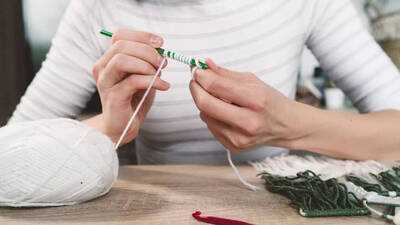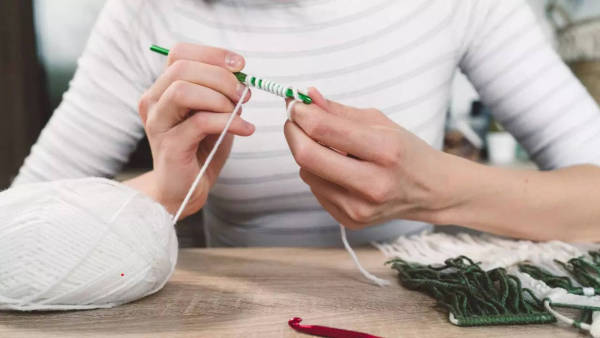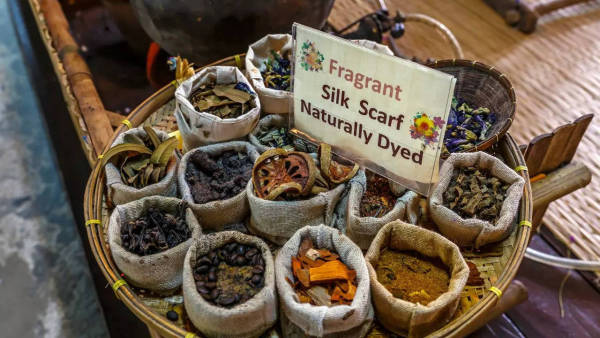What is Sustainable art and how Indian folk artists have been sustainable for centuries

Art has always been an important part of human life. Be it the art of cave paintings of early man times or the aesthetics of sculptures and murals today, art has given so much to people. It has shaped creativity, been a part of histories and cultures, and of course, has shot some people to fame for their artistic abilities.
And while centuries ago people and early cavemen did not care if their art was ‘ sustainable ’ or not, with growing environmental concerns we now need to be. And so has come the concept of ‘Sustainable art’, art that is friendly to the environment, is made with eco-friendly materials, and when it decomposes it mixes in right with the environment without harming sensitive life forms.
But one thing that SO MANY artists do not see today is that a concept that they have just introduced, is something that Indian folk artists have been practicing for centuries. Their methods, passed down through generations, use natural materials, reduce waste, and have always been one with nature.
What is Sustainable art today?

To put it simply, sustainable art is something that comes from nature and after a while just as easily blends in nature. It does not harm the environment, does not leave behind any toxins, and best of all, it is sustainable.
Today, sustainable art means using natural, biodegradable, or recyclable materials. Not adding any toxic chemicals or dyes to the art, not wasting supplies (be it paper or paint or fabric), reusing anything whenever possible, and also creating art in a way that it not just is sustainable but also promotes being sustainable.
Artists today are being more responsible of their art supplies as the excessive use of plastic, chemical paints, and synthetic materials has become rampant and is contributing to pollution even though it emerges from one of the most beautiful means, art.
How did art become toxic?
Art became toxic not with its message but with how it started to be sourced. Most commercial paints now come with harmful chemicals like lead and cadmium, which pollute water and soil. In the mass markets, sculptures and idols are now made with POP , a form of plaster, that does not dissolve easily and thus pollutes the water and soil. In fact, in a spree to create the best and most error-free art, many artists waste canvas after canvas just to set in the definition of perfect.
Indian folk art and Sustainability
Long before the term ‘sustainability’ became popular, Indian folk artists were practicing eco-friendly techniques in their art. Be it the wall paintings in Maharashtra, or the crushed rice pigments used for Aipans, Indians were using things that could blend right into the environment when they were washed off or destroyed to make room for something new.
For example, we have the Warli art from Maharashtra which is basically painting on mud walls.

The concept of Warli was simple, there will be beautiful and simple white figures on an earthen background, the muddy walls of the home, and when festivals and occasions will arrive, instead of expensive decor, these traditional practices will adorn the homes.
People used rice paste for the white pigment, there was a fresh coat of mud on the walls, and the rice and mud dried up over time and with a new occasion a new coat of mud or another natural pigment would grace the wall.
Artist and author Anurag Anand says "Indian folk art promotes sustainability in multiple ways. From Pattachitra to Gond art and from Madhubani paintings to Worli art, most folk art forms are made on eco-friendly surfaces using natural pigments and tools. These art forms are deeply rooted in the culture and traditions of various communities. They help in passing down ancient sustainable practices like organic farming, natural dyeing etc. across generations. These folk art forms also promote awareness around environmental issues through the themes that they depict."
He further adds "My art practice, while not being overtly sermonic, is about subtle cues that depict the harmony with nature on which humanity breeds. You will also find simple everyday waste pieces being reused in some of my compositions - a simple reminder of the little things we can do to leave a better world for our children."
Even in Madhubani paintings that we see today, natural colours, old fabrics, and handmade paper is used even today. There are natural colours from turmeric, indigo, and flowers, the brushes are either made with bamboo or the colours done with fingers, and the canvas for the paintings is made with cotton or tree bark.
In Kalamkari too, people used plant-based dyes and natural material to paint on. The ancient textile art required people to wait for days before they could start painting and the pre-painting process had them soaking the cloth in water and cow dung, then drying it, then repeating certain processes again to make the cloth hard and sturdy and alter the fabric in a way that the colours and dyes did not smudge or seep into one another.
Even today the natural dyes are made from pomegranate, indigo, and myrobalan fruit, and a tamarind twig is used as a brush.
Then we have the Pattachitra, which is basically painting (chitra) on cloth or leaves (patta), and nothing can be as sustainable as this art form. Pattachitra artists used to paint on old cloth or palm leaves instead of synthetic paper and found their pigments in plants and nature.
They painted elaborate scenes from mythology and scriptures and did it all while being friendly to nature.
Another folk art form that remains sustainable even today but has some forms of toxicity now is the Terracotta art. Traditional potters used to have locally sourced clay, used sun-drying techniques instead of electric kilns and even did natural polishing with stones and leaves. And since clay is biodegradable, terracotta art does not leave behind toxic waste.
How can we be more sustainable?
It is important that we do not just lecture artists about sustainability, but also be sustainable in our own actions and our choice of art. We need to be more encouraging towards traditional eco-friendly techniques. We need to support artisans who use natural materials, even when it costs a little extra as compared to the mass produced one. And we need to preserve our heritage art forms that are in harmony with nature.
So, buy from local folk artists instead of mass-produced decor, use recycled materials in your own artwork, talk to others about sustainable art and promote a workshop or artist who makes sustainable art, and spread the word about the importance of being eco-friendly even in artworks.
 Art has always been an important part of human life. Be it the art of cave paintings of early man times or the aesthetics of sculptures and murals today, art has given so much to people. It has shaped creativity, been a part of histories and cultures, and of course, has shot some people to fame for their artistic abilities.
Art has always been an important part of human life. Be it the art of cave paintings of early man times or the aesthetics of sculptures and murals today, art has given so much to people. It has shaped creativity, been a part of histories and cultures, and of course, has shot some people to fame for their artistic abilities.

